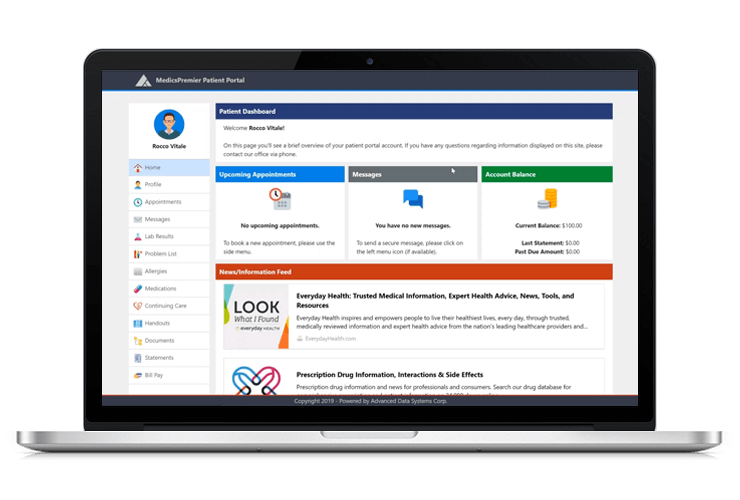Patient Portal Software · Health Cloud · RXNT · Klara · SimplePractice · IntakeQ · Human API · Nextech EHR & PM · ReferralMD. 4.6 (5).
https://www.capterra.com/patient-portal-software/

Introduction
In today’s digital age, patient portals have become indispensable tools for healthcare providers and patients alike. These secure online platforms empower patients with convenient access to their health information, streamline communication with their healthcare team, and enhance their overall healthcare experience.
What is Patient Portal Software?
Patient portal software is a secure online platform that allows patients to access their personal health information, communicate with their healthcare providers, and manage their healthcare needs. It provides a convenient and efficient way for patients to take an active role in their healthcare journey.
Benefits of Patient Portal Software
- Improved Patient Engagement: Patient portals foster patient engagement by providing easy access to health information, promoting self-management, and encouraging proactive healthcare.
- Enhanced Communication: Portals facilitate secure communication between patients and their healthcare team, reducing phone calls and improving efficiency.
- Streamlined Care Management: Patients can view test results, request prescription refills, schedule appointments, and pay bills online, simplifying care management.
- Increased Patient Satisfaction: Convenient access to health information and improved communication lead to higher patient satisfaction and loyalty.
- Reduced Costs: Patient portals can reduce administrative costs for healthcare providers by automating tasks and reducing the need for in-person visits.
Types of Patient Portal Software
- Integrated Patient Portals: These portals are part of an electronic health record (EHR) system, providing seamless integration with patient data.
- Standalone Patient Portals: These portals are independent of EHR systems and can be used by providers who do not have an EHR or who want a more customizable solution.
Current Trends in Patient Portal Software
- Increased Adoption: Patient portals are becoming increasingly common, with a growing number of healthcare providers recognizing their benefits.
- Enhanced Features: Portals are evolving to include features such as video conferencing, remote patient monitoring, and integration with wearable devices.
- Patient-Centered Design: Portals are being designed with a focus on patient experience, ensuring ease of use and accessibility.
How to Choose the Right Patient Portal Software
When selecting patient portal software, consider the following factors:
- Integration with EHR: If you have an EHR system, choose a portal that integrates seamlessly.
- Features: Determine the features that are important to your practice and patients.
- Cost: Compare the costs of different options and consider your budget.
- User Experience: Choose a portal that is easy to use for both patients and staff.
- Security: Ensure that the portal meets HIPAA compliance standards and provides robust security measures.
Conclusion
Patient portal software is a powerful tool that can transform the patient experience and improve healthcare outcomes. By providing patients with convenient access to their health information and empowering them to take an active role in their care, patient portals are revolutionizing the way healthcare is delivered. If you are not already using a patient portal, now is the time to explore the benefits and implement this valuable resource in your practice.
FAQ
Is patient portal a software?
What is the difference between patient portal and EMR?
What are other names for patient portals?
Is patient portal legit?
Read More :
https://technologyadvice.com/patient-portal-software/
